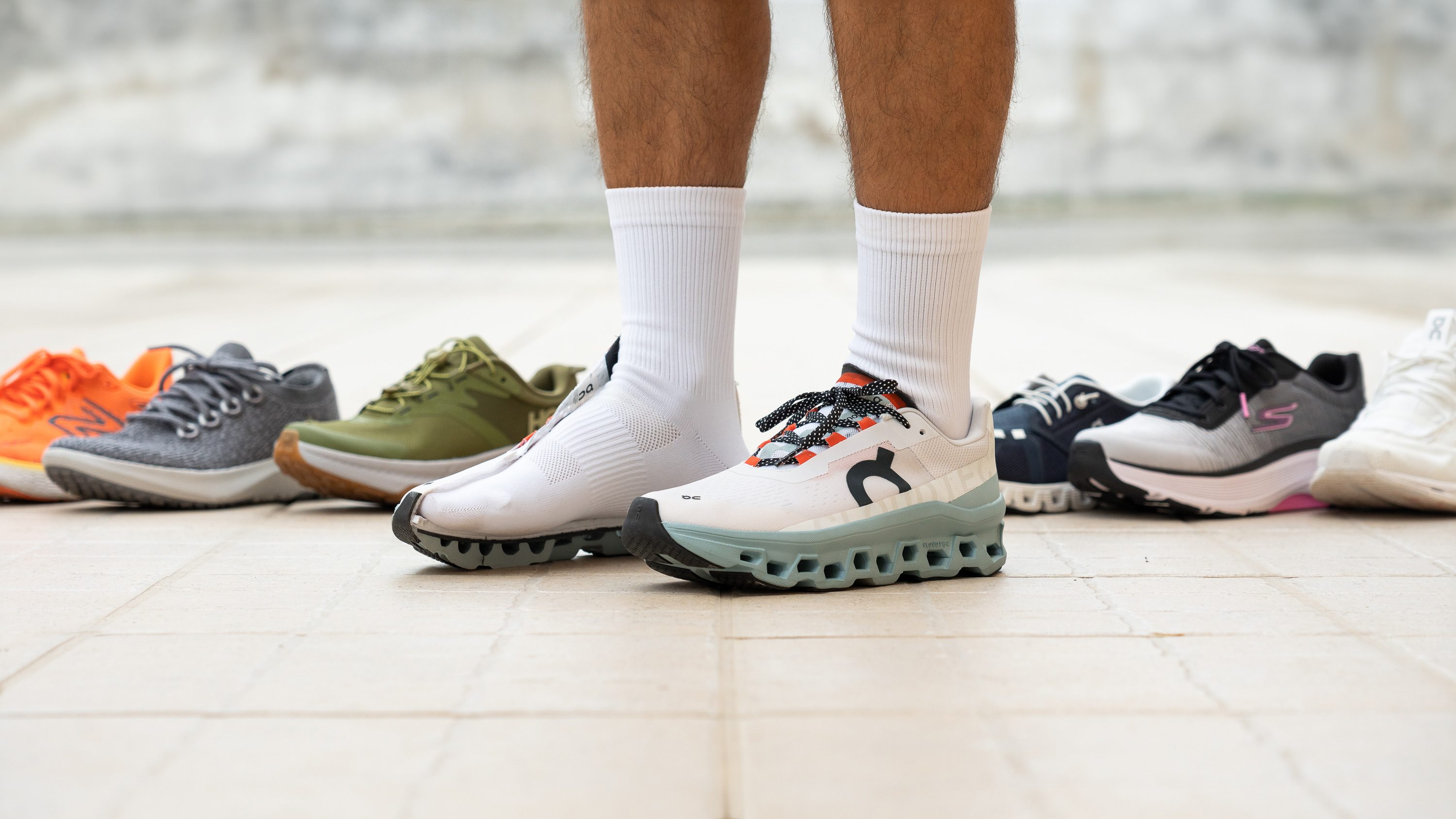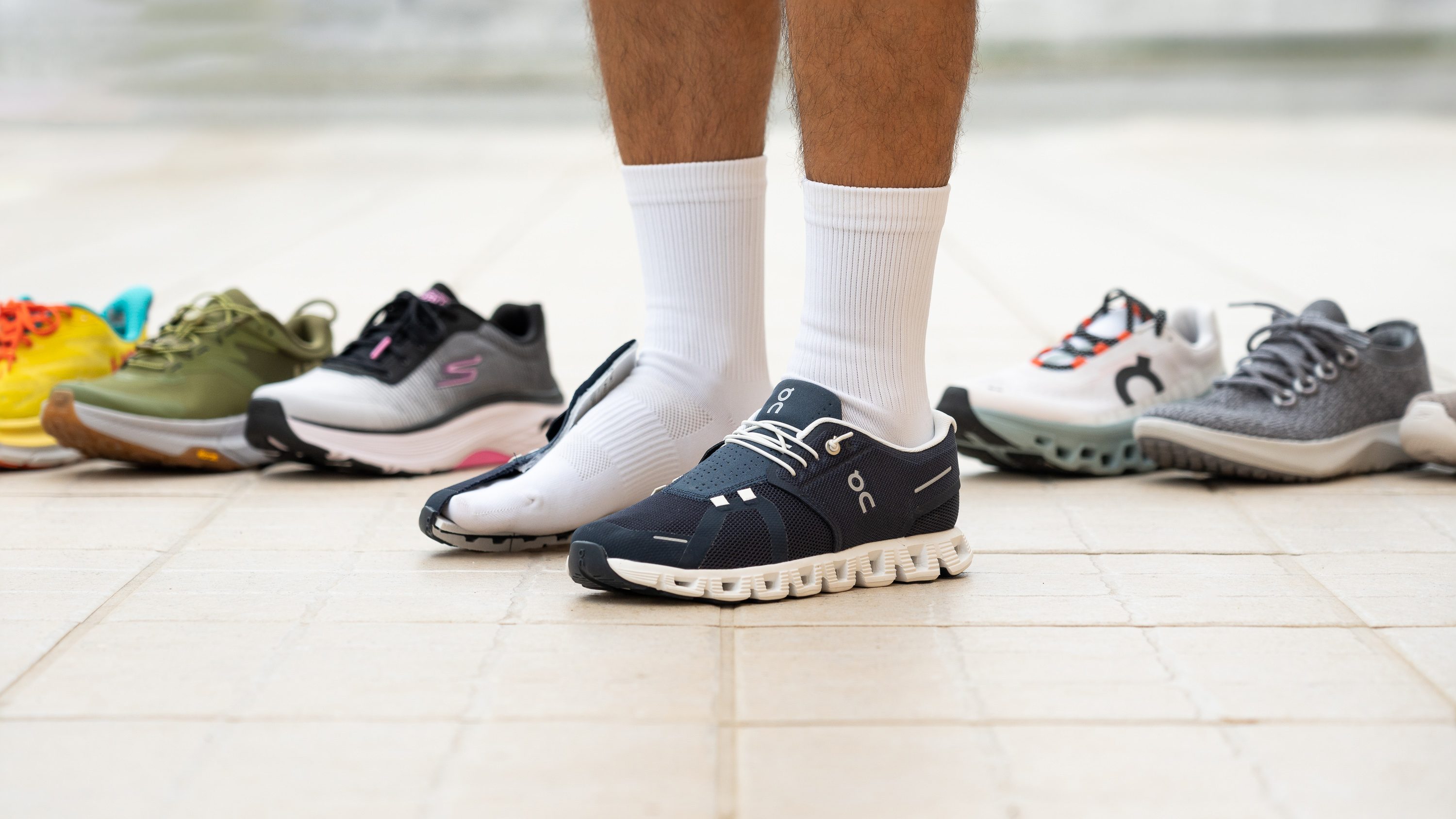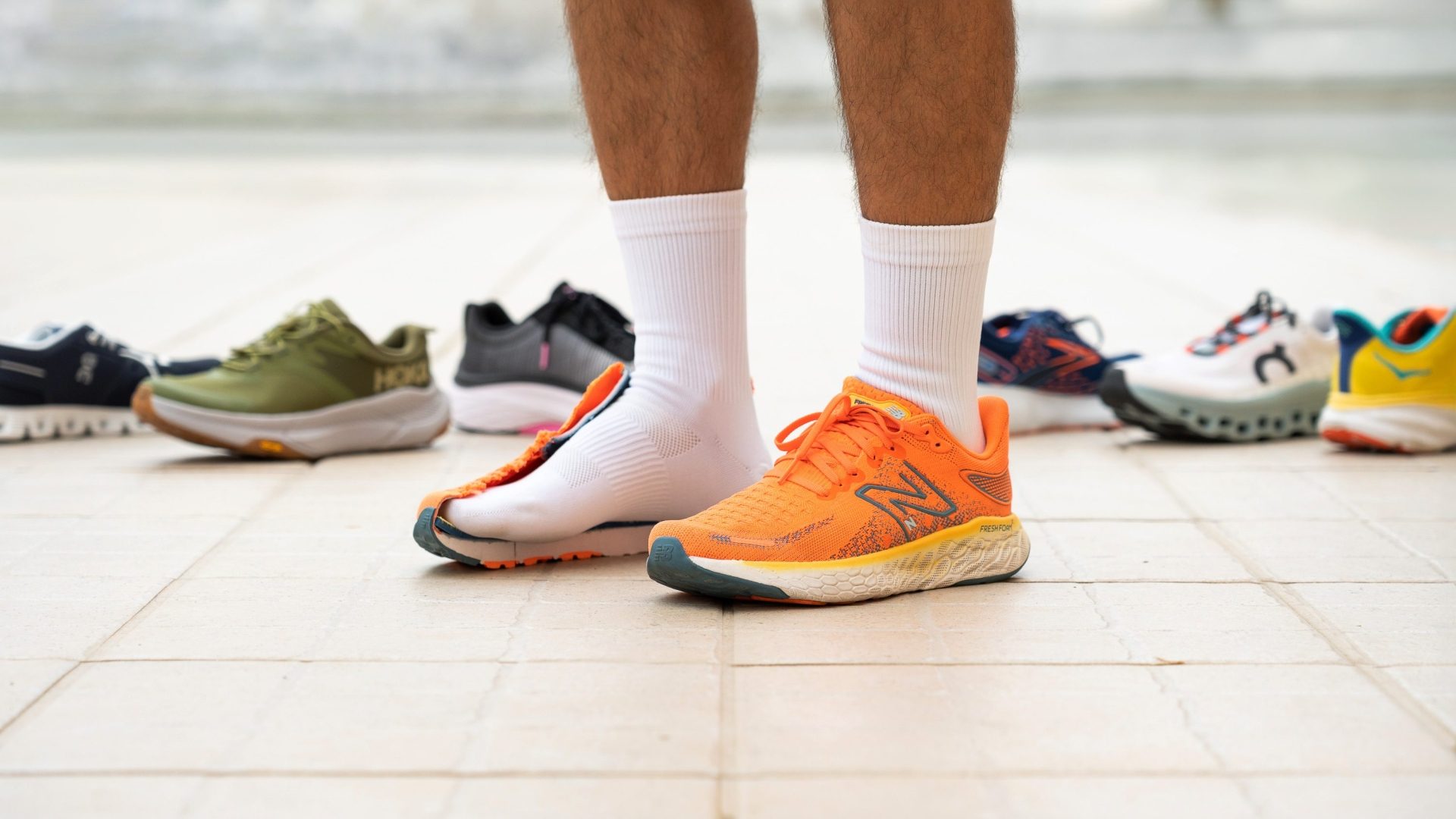Do you ever feel a persistent ache in your feet, ankles, or even your knees after a good walk? For many, this discomfort might be more than just tired muscles; it could point to a common foot movement called overpronation. This simply means your foot rolls inward a bit too much when you step, and it can lead to a host of issues if not properly supported. Finding the right footwear, in a way, becomes a very important step towards comfort and well-being.
The quest for the "best" walking shoes for overpronation isn't just about picking any pair off the shelf, you know. It's about finding footwear that truly suits your unique gait and provides the kind of stability and support your feet need. Think of it like choosing the most effective tool for a specific job; for your feet, the most suitable shoe makes all the difference.
This guide aims to help you understand what overpronation means for your walking routine and, quite frankly, how to choose shoes that can make a real positive impact. We'll look at the features that matter most and offer practical advice so you can pick the absolute best options for your feet, feeling good with every stride.
Table of Contents
- What is Overpronation?
- Key Features of Best Walking Shoes for Overpronation
- Top Picks for Best Walking Shoes for Overpronation
- Beyond the Shoes: Tips for Happy Feet
- FAQs About Walking Shoes for Overpronation
- Conclusion
What is Overpronation?
Overpronation is, you know, a pretty common movement pattern where your foot rolls inward excessively after landing. When you take a step, your foot naturally rolls inward a little to absorb shock, which is called pronation. However, if this inward roll goes too far or lasts too long, it becomes overpronation, and that's where the trouble often begins.
This excessive rolling can put extra stress on your arches, ankles, and even your lower legs and knees. It's almost like your body is trying to compensate for an unstable base, and this can lead to various aches and discomforts over time. Understanding this foot motion is, frankly, the first step to finding relief.
How to Spot Overpronation
There are a few simple ways to get a sense of whether you might be an overpronator, you see. One easy method is to look at the wear pattern on the bottom of your old shoes. If the wear is mostly concentrated on the inner edge of the sole, especially near the ball of your foot and heel, that's a fairly good sign of overpronation.
Another common way to check is the "wet test." Just wet your feet and stand on a piece of paper or cardboard for a few seconds. If your footprint shows almost the entire sole of your foot, with very little or no arch visible, you likely have flat feet, which often go hand-in-hand with overpronation. You might also notice your ankles seem to roll inward when you stand or walk, which is another visual cue.
Why Proper Shoes Matter
Wearing the right shoes is, quite honestly, incredibly important for anyone who overpronates. Shoes that don't offer enough support can make the problem worse, leading to more pain and potential injuries. Imagine trying to build a stable house on a shaky foundation; it just won't work out well.
The right footwear helps to control that excessive inward roll, giving your foot a more stable platform. This can reduce the strain on your arches, ankles, and knees, allowing you to walk more comfortably and for longer periods. It's about providing the most suitable support to keep your body aligned and feeling good, truly.
Key Features of Best Walking Shoes for Overpronation
When you're on the hunt for the best walking shoes for overpronation, there are specific elements you should really pay attention to. These features are what make a shoe capable of providing the necessary support and stability. It's not just about how they look, but how they perform for your unique foot mechanics, you know.
The goal is to find shoes that help guide your foot into a more neutral position, preventing that excessive inward roll. This means looking beyond basic comfort and focusing on the construction and design of the shoe itself. So, let's break down what to look for, shall we?
Stability Control
Stability control is, arguably, the most important feature for overpronators. These shoes are built with special elements in the midsole to prevent the foot from rolling too far inward. Often, this involves a firmer material on the inner side of the shoe, which resists compression and helps keep your foot aligned. This is sometimes called a "medial post" or "dual-density foam."
You want a shoe that feels secure and doesn't let your foot wobble around too much. A good stability shoe will provide a noticeable sense of support along your arch, helping to control that excessive motion. It's really about guiding your foot gently, yet firmly, into a more appropriate position as you move.
Cushioning and Support
While stability is key, cushioning is also very important for comfort, especially for walking long distances. You want a shoe that absorbs impact effectively without being too soft, which could actually worsen overpronation. The best shoes for overpronation often strike a balance between firm support and comfortable padding.
Look for shoes with good arch support that matches the natural curve of your foot. Some shoes come with removable insoles, which can be great if you use custom orthotics. The idea is to have a supportive base that also feels pleasant to walk on, providing a sort of soft landing with each step, you see.
Midsole Design
The midsole is, basically, the part of the shoe between the outer sole and the upper. For overpronation, the midsole design is where a lot of the magic happens. As mentioned, many stability shoes use a dual-density foam, with a firmer foam on the inner side of the shoe to resist the inward roll. This firmer section acts as a barrier, stopping your foot from collapsing too much.
Some brands also use guide rails or other structural elements within the midsole to provide a more integrated support system. These features work to keep your foot centered throughout your stride, offering a more controlled and stable experience. It's all about creating a platform that encourages a healthier foot motion, truly.
Outsole Durability
The outsole, which is the very bottom part of the shoe that touches the ground, needs to be durable, especially for walking shoes. Overpronators often put more stress on the inner edge of their shoes, so a robust outsole in this area is particularly important. Look for materials that are known for their resistance to wear and tear.
A good outsole will also provide proper traction, keeping you steady on various surfaces. While not directly related to overpronation correction, a durable outsole means your shoes will last longer and continue to provide the necessary support for many miles. This is, you know, a practical consideration for your investment.
Fit and Comfort
Even the best-designed shoe won't help if it doesn't fit properly, obviously. Make sure there's enough room in the toe box for your toes to wiggle freely, and that your heel feels secure without slipping. The shoe should feel snug around the midfoot, offering a supportive hug without being too tight.
Always try on shoes later in the day when your feet are slightly swollen, and wear the type of socks you typically walk in. Walk around the store for a bit to get a real feel for them. A comfortable fit is, arguably, just as important as the stability features, because if they don't feel good, you simply won't wear them.
Top Picks for Best Walking Shoes for Overpronation
When it comes to specific shoe choices, the "best" really means the most suitable one for *your* feet, you see. There are several brands that have consistently produced excellent walking shoes with the necessary stability features for overpronation. These brands have a reputation for understanding foot mechanics and building footwear that offers genuine support.
While specific models change with new releases, the underlying technology and commitment to stability often remain consistent within these brands. So, knowing which brands to look at is, in fact, a great starting point for your search. It narrows down the vast selection out there, which is helpful.
Brands Known for Stability
Many popular athletic shoe companies offer dedicated lines for stability and motion control. Brands like Brooks, Asics, Saucony, and New Balance are often recommended by podiatrists and running store specialists. They have spent years refining their stability technologies, such as guide rails, medial posts, and supportive cushioning systems.
Brooks, for example, is well-regarded for models that provide a balanced blend of cushioning and stability, often with guide rail systems that help keep your foot aligned. Asics frequently incorporates their GEL cushioning with stability features to offer a comfortable yet controlled ride. New Balance and Saucony also have a strong presence in this category, offering a variety of options that cater to different levels of overpronation. It's pretty much a safe bet to start with these names.
What to Look for in a Specific Model
Once you've identified a few promising brands, look for models specifically labeled as "stability" or "motion control" shoes. These terms indicate that the shoe is designed to address overpronation. You might also see features like "medial post," "guide rails," or "support frame" in the shoe's description.
Pay attention to user reviews, particularly from people who also identify as overpronators. Their experiences can offer valuable insights into how a shoe performs in real-world walking conditions. Remember, the best choice for this purpose is one that feels right on your foot and provides the specific support you need. Find out more about foot health on our site.
Beyond the Shoes: Tips for Happy Feet
While finding the best walking shoes for overpronation is a huge step, it's just one part of a larger picture for keeping your feet comfortable and healthy. There are other habits and considerations that can complement your footwear choice and help reduce discomfort. It's about a holistic approach to foot care, you know.
Taking care of your feet means being mindful of how long you've had your shoes, and also considering other ways to support your foot health. These small actions can make a big difference in your overall comfort and well-being. So, let's look at a couple of other key points.
When to Replace Your Shoes
Even the most effective walking shoes have a lifespan, and knowing when to replace them is, actually, pretty important. The cushioning and support structures in shoes break down over time, even if the outside still looks okay. Typically, walking shoes should be replaced every 300 to 500 miles, or roughly every six to twelve months, depending on how often you walk.
If you start to notice increased aches or pains, or if the wear pattern on your shoes becomes very uneven, it's probably time for a new pair. Continuing to wear worn-out shoes can negate the benefits of having stability footwear and potentially lead to new problems. It's best not to delay replacing them when they've lost their effectiveness, frankly.
Complementary Foot Care
Beyond shoes, consider other ways to support your feet. Stretching your calves and Achilles tendons can help, as tightness in these areas can sometimes contribute to overpronation. Strengthening exercises for your foot and ankle muscles can also improve stability and resilience. You might, for example, try picking up marbles with your toes or doing calf raises.
If you continue to experience persistent pain, it's a really good idea to consult with a foot care specialist, like a podiatrist. They can offer a professional assessment of your gait and recommend personalized solutions, which might include custom orthotics or specific exercises. You can learn more about foot health from resources like the American Podiatric Medical Association: https://www.apma.org/.
FAQs About Walking Shoes for Overpronation
Do I really need special shoes for overpronation?
Yes, absolutely, you know, for most people with overpronation, special shoes can make a big difference. Regular shoes often lack the specific support features, like a medial post or guide rails, that help control the inward roll of your foot. Without this control, you might experience more foot, ankle, knee, or even hip pain over time. These specialized shoes are designed to provide the most suitable support, helping to align your foot better as you walk, which can significantly improve comfort and reduce the risk of injury. It's a bit like needing specific tools for a specific job; the right shoes are the right tools for your feet.
Can insoles or orthotics help with overpronation?
Yes, they certainly can, you see. Insoles, especially custom orthotics prescribed by a professional, are often very effective in managing overpronation. They provide targeted arch support and can help redistribute pressure across your foot, further controlling that excessive inward motion. While many good stability shoes come with decent built-in support, some people find that adding an over-the-counter insole or using custom orthotics provides an even better level of correction and comfort. If your current shoes aren't quite enough, or if you have severe overpronation, orthotics could be a really beneficial addition to your footwear.
How do I know if a shoe has enough support for overpronation?
You can often tell by looking at the shoe's design and feeling its structure, frankly. First, check if the shoe is specifically labeled as a "stability" or "motion control" model by the brand. These terms indicate it's built for overpronation. Then, try to twist the shoe; if it twists easily in the middle, it probably doesn't have enough stability. A good stability shoe will be quite rigid through the midfoot. Also, press on the inner side of the midsole; you should feel a firmer material there, which is the medial post. When you try them on, your foot should feel supported and secure, not like it's rolling inward. Discover other shoe guides here.
Conclusion
Finding the best walking shoes for overpronation is, quite simply, an investment in your comfort and long-term foot health. By understanding what overpronation is and knowing which features to look for in footwear, you can make a choice that truly supports your body. It's about selecting the most suitable type of thing for your specific needs, allowing you to enjoy your walks without unnecessary discomfort.
Remember, the goal is to provide your feet with the stability they need to move more efficiently and comfortably. Taking the time to research, try on different options, and perhaps even seek advice from a shoe specialist can lead to a much happier walking experience. Your feet work hard for you every day, so giving them the proper support is, you know, a very kind thing to do.



Detail Author:
- Name : Elza Greenfelder
- Username : kovacek.barton
- Email : gust94@huels.com
- Birthdate : 1987-08-15
- Address : 838 Modesta Dam Apt. 027 West Conradview, NE 98788-9062
- Phone : +1 (272) 722-5290
- Company : Reichel and Sons
- Job : Film Laboratory Technician
- Bio : Itaque at consequatur deleniti. Minus tempore quo et dolores omnis. Fuga aliquam eos voluptatem aut. Quo doloribus animi sapiente voluptatum. Voluptates dolorem impedit eum omnis omnis.
Socials
linkedin:
- url : https://linkedin.com/in/gilbert_bartoletti
- username : gilbert_bartoletti
- bio : Voluptatem et neque sequi.
- followers : 523
- following : 2138
instagram:
- url : https://instagram.com/gilbert_bartoletti
- username : gilbert_bartoletti
- bio : In et necessitatibus aliquam quia sint quia. Perspiciatis quia et fugiat.
- followers : 2501
- following : 1311
twitter:
- url : https://twitter.com/gilbert_dev
- username : gilbert_dev
- bio : Qui reprehenderit quasi quis. Beatae nisi temporibus autem ipsam fugiat consectetur. Placeat voluptas atque dolores fugiat facere.
- followers : 2127
- following : 1044
facebook:
- url : https://facebook.com/gilbertbartoletti
- username : gilbertbartoletti
- bio : Quisquam itaque velit molestiae enim quo aut.
- followers : 4509
- following : 981
